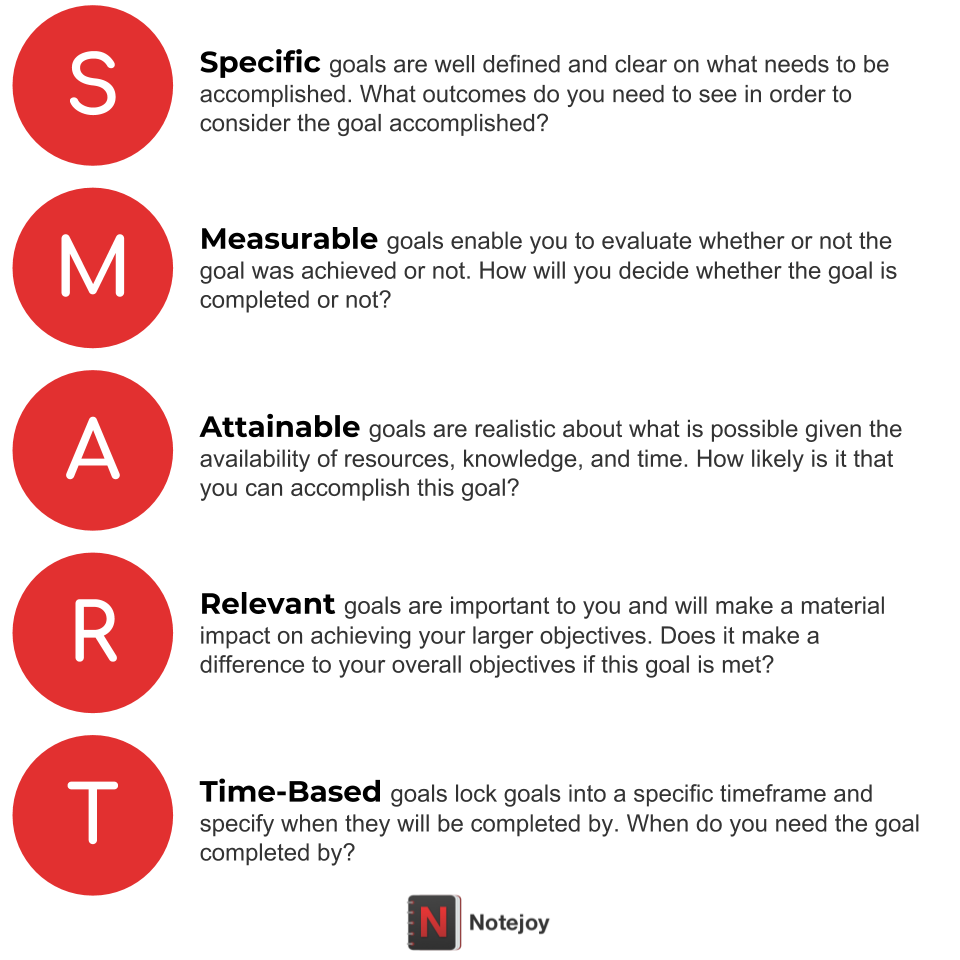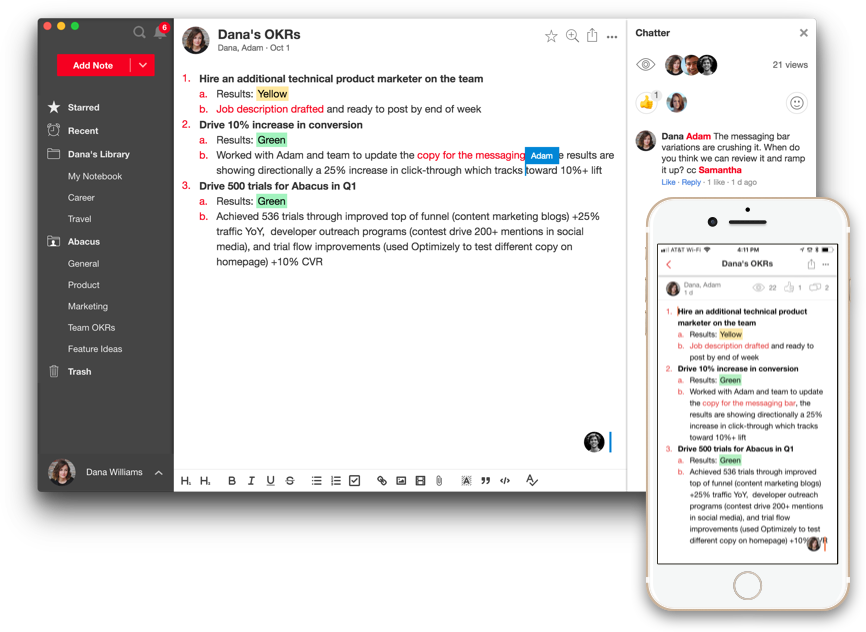SMART Goals Examples for Work

20+ Examples of Work Goals That Follow the SMART Criteria
The SMART in Smart Goals stands for stands for Specific, Measurable, Attainable, Relevant, and Time-Based. In order to be a SMART goal, the goal needs to meet all five of these criteria. For a more detailed run-down on what each of these means check out our Guide to Smart Goals.

As you review the examples below, notice how each outlines actions and timelines that need to take place in order to accomplish the overall goal. Each goal can be broken into specific subgoals to make them more measurable and achievable to accomplish the overall goal.
Examples of Business Smart Goals
- Reduce overtime in the department from 150 hours per month to 50 hours per month by the end of the fiscal year with no increase in incident reports.
- Identify, execute and run 5 customer education webinars this quarter with 10+ attendees and 80%+ satisfied/very satisfied rate
- Prepare for product launch by developing launch checklist of activity, tasks, due-dates and drive approval by all stakeholders by April 1
- Conduct at least 10 phone screens and 3 on-site interviews to achieve the goal of hiring new finance manager by end of quarter
- Gain four new clients for my business this quarter by conducting 3 or more customer meetings each week
- Acquire 45,000 new online customers this financial year at an average cost per acquisition (CPA) of $30 with an average profitability of $5
- Increase the reach of the business Facebook page from 35,000 likes to 100,000 likes by July 31 through ads, events, and video
- Ensure that the 90%+ of the team has completed training on the new inventory management software by the end of the quarter.
- Secure $10K in sponsorship commitments for our event this fall by the end of March
- Review all customer accounts above $20K/year revenue and schedule a strategic review with the top 5 with the greatest opportunity for upsell
- Deliver customer support with a 90%+ Satisfied/Very Satisfied customer satisfaction rate and reduce overall customer contact volume by 10%
Examples of Professional Smart Goals
- Present at two or more internal employee per quarter to improve confidence and presenting skills. Improve industry knowledge by attending 3+ industry events and provide a write-up to the rest of the team on key learnings afterward
- Develop and practice my management skills by conducting weekly 1:1s with my direct reports, quarterly 1:1s with my indirect reports, and quarterly all hands with my team resulting in 10% improvement in employee engagement score at the end of the year
- Review and reduce the number of meetings on my calendar by 50% in order to enable more time for strategic planning by end of the month
- By end of quarter, complete course work and pass for CFA certification
- Grow my network by having at least one lunch each week on average this quarter with an external professional relationship
- Improve my product understanding by creating, drafting, and delivering two projects using our product by the end fo the quarter
- Spend 2 days per month building my customer understanding by shadowing teammates in operations and sales; deliver a write-up at the end on key learnings to the rest of the team
Five Tips for Using Smart Goals at Work
If you're implementing Smart Goals for the first time, here are a few tips on how to get started.
Tip #1. Get everyone on the same page
If the team does not have a shared understanding of what a Smart Goal is, this is a sure recipe for disaster as far as getting specific and measurable goals in place. Run a training, have a meeting, send an email -- whatever it takes -- in order for everyone to understand all of the criteria for Smart Goals.
Tip #2. Set an example and make your goals shared and public
Making the organization's goals public can be a powerful tool for driving alignment in your business's goal setting process. By being able to see the goals of their leadership and peers, employees have a stronger understanding of where they fit in in the process. See our guide on how to leverage Notejoy for goals for how-to and templates.
Tip #3. Create a schedule to keep everyone on track
In order for the entire team to be using Smart Goals effectively, it's important to have a system in place that encourages regular review and feedback on goals. It's often helpful for leadership teams to send out the initial Smart Goal plan with a calendar of events specifying when goals will be reviewed, finalized, adjusted, and finally evaluated.
Tip #4. Be clear on what success looks like
Do you want your organization to be setting Smart Goals that are very safe and achievable, or do you expect them to be reaching with Stretch Goals? By establishing a clear expectation of what Success looks like within the organization, leaders can actively encourage people to reach for ambitious goals. For example, a clear message that 'We expect you to achieve 70% of your goals and that is what success looks like. Achieving 100% of your goals is failure and means you set the bar too low.' is a very strong message.
Tip #5. Collect feedback and optimize your goal setting process
Every organization is a little bit different, both in its work customs as well as culture. Because of that, the way goal setting processes are established and run can be very different but still effective. Involve the entire team in the process by running an internal survey on the process.
Notejoy makes setting and sharing Smart Goals easy
Notejoy makes it fast and easy to get your team on the same page to set SMART goals and establish them with pinned notes and templates.

- Real-Time Collaboration - As a cloud-based solution, Notejoy allows you to share your goals with internal and external collaborators. These collaborators can view, discuss, and comment on goals as well as view the latest version.
- Always in Sync - Rather than managing different versions of agendas or multiple threads of conversation, Notejoy allows the entire team to always see agendas including changes and discussions at the same time.
- Keep Goals in One Searchable Place - have one place to keep track of and maintain one system of record for your team's goals. Manage who has access to what information, and enable team members old and new to search across past and current goals.